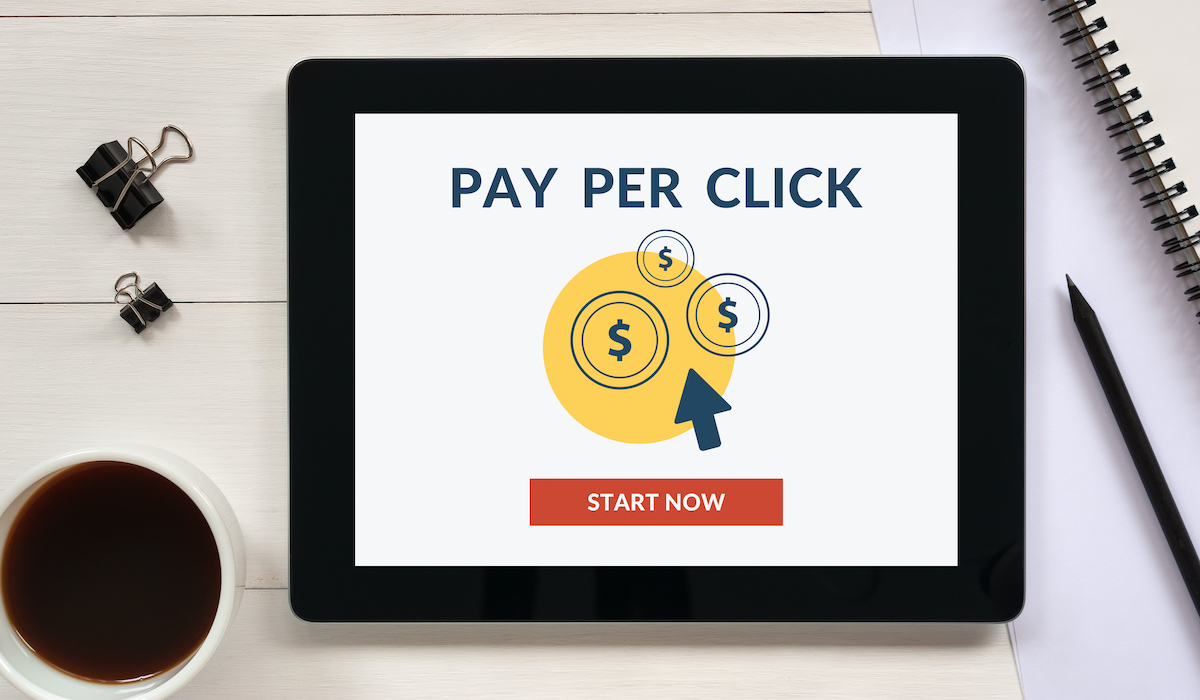Ask yourself: for every 1,000 leads you generate are your marketing and sales team able to convert 9-10 of those into customers within 3-9 months? What about 18-20 customers?
Marketing and sales teams for B2B companies are leaving millions of dollars on the table because they don’t actively nurture leads.
Even with spending hundreds of thousands of dollars to acquire new contacts from trade shows, digital campaigns, sales outreach, referrals and more, most sit in a database never to be worked by sales.Or worse, sales teams spend a considerable amount of time and effort on leads that aren’t ready to buy and end up ignoring the sales-ready leads.
In this post, we will:
- Identify if lead nurturing will help address your marketing and sales pipeline challenges
- Define what lead nurturing is and some key marketing and sales terms
- Provide some marketing and sales funnel benchmarks to see how you compare
- Share a few ways to nurture leads using common B2B marketing and sales scenarios
Do any of these scenarios sound familiar?
Scenario 1:
- Sales Leader: “Team, we came back from a trade show over 90 days ago, where we generated 4,000 new prospects, and we haven’t followed up with a single one! Why?!”
- Sales Team: “We don’t know which are good leads, and we don’t have time to manually look through all of these email addresses to figure out if any of them are ready to buy.”
Scenario 2:
- Marketing Team: “Sales team, our last campaign generated 1,000 new leads. What is happening with them, and why haven't they closed?”
- Sales Team: “The leads weren’t any good; we followed up with a bunch of them, but they didn’t answer our calls or want to take a meeting.”
Scenario 3:
- Sales Team: “We keep losing out on new sales leads to our competitors. We don’t know enough about the prospect and their needs; we are always one step behind.”
The problem with these scenarios is that they ignore two key factors in the buying process.
First, the timing of activities is not aligned to your buyers but rather forced around your schedule for a trade show, or the timing decided to run a campaign. While this timing might align with purchasing, as a marketing and sales team, you will likely be too early or too late to join into the buying process.
Second, your content and channels are misaligned to where your buyers are in the buying process resulting in low engagement and low conversion rates. Either you’re focused on the top of the funnel to build brand awareness or generate net new leads, or you're focused on the bottom of the funnel, which includes call-to-actions like talking to a sales rep, watching a demo or planning out a proof of concept (POC).
Trying to sell your product/service to a prospect before they even know who you are and how you can help is an easy way to never close a deal. You need to deliver the right message on the right channel at the right time to be effective.
Lead nurturing defined
Lead nurturing is the process of building a relationship with a buyer at each stage of their buying journey to help guide the buyer through the sales funnel. This process uses buyer behavior data and activities to deliver the right content, at the right time, to the right buyer, at the right stage of the buying process.
What lead nurturing helps with:
- Building thought leadership
- Maintaining consistent communication with your audience
- Identifying interest or pain points
- Maintaining or increasing engagement
- Shortening sales cycles
- Identifying cross- and up-sell opportunities
- Encouraging referrals and new lead generation
Marketing and sales pipeline definitions
To get started, here are a few definitions and benchmarks.
- Lead: a contact who has shown interest in your product/service offering through a download of materials on your website, a sales presentation by a rep, or similar.
- Opportunity: a lead your sales teams are working with buying potential.
- Closed-won: the prospect signed on the dotted line, and you are about to get a check.
- Average deal amount: the average deal size of most sales for the company or the specific product/vertical you are targeting.
NOTE: In many cases, it makes sense to expand your funnel stages to include Lead, Marketing Qualified Lead, Sales Qualified Lead, or others to provide more granular analysis to the marketing and sales funnel performance.
Marketing and Sales benchmarks
- Lead to Opportunity = 12%
- Opportunity to Closed-Won = 7.5%
- Lead to Closed-Won = 1%
- Average Won Deal = $60,000
NOTE: we are using a mix of client averages and benchmark data from Salesforce for our sample benchmarks.
Using these benchmarks for every 1,000 leads generated, we should make about $540,000.
- 1,000 leads converts to 120 opportunities
- 120 opportunities convert to nine won deals
- Nine won deals with an average deal size of $60,000 give us $540,000.
How you can nurture leads
Nurturing leads is more than email marketing. In a survey conducted by HubSpot, email marketing was the most effective channel, followed by website, social media, and search. One of our favorites is remarketing ads through Google Display and Social Ads.

Scenario 1: Trade shows to generate leads
- Sales Leader: “Team, we came back from a trade show over 90 days ago, where we generated 4,000 new prospects. Why haven’t we followed up with a single one?!”
- Sales Team: “We don’t know which are who’s a good leads or not, and we don’t have time to manually look through all of these email addresses to figure out if any of them are ready to buy.”
Based on the formula, the team has lost out on $2,160,000 in won deals, plus all of the expenses from the event such as travel, time, trade show floor rental, and attendance tickets. For many shows, you can easily add another $100,000 - $200,000.
To not waste the investment in the show, we organize the lead follow up into three categories. We use Hot, Warm, and Cold as terms, but you can use other terminology that is more relatable to your sales team.
Hot Leads
These contacts had a conversation with sales at the show and have shown a buying trigger. As they are actively in the buying process and have made a personal connection, sales need to reach out.
The lists for each sales rep should be a small and very select group of contacts. Contacts should also be in the later stages of the buying process of evaluating solutions, refining their budget, and solidifying their purchasing timetable.
Next steps:
- Engage the leads 1:1. If they engage, move them forward in the sales process.
If they are not ready to buy yet, then they should move into a lead nurturing program to educate further and engage. - Engagement should be monitored to identify when they behave like a re-engaged buyer.
Warm Leads
These contacts are highly relevant because they meet your base ideal buyer criteria, and because, from a timing perspective, it is reasonable to try and engage with them. What we don’t know is where in the buying process they are, what role they have in the buying process, and whether your product/services are even a good fit.
Using lead qualification data marketing can determine if the prospects are at target accounts or meet the standards for an ideal buyer. Note, this is not the same as a persona. Need a template to get started? Use our Ideal Buyer and Offering Matrix worksheet.
The bulk of contacts should go into this category, and this is where lead nurturing and a marketing automation platform are essential.
Next steps:
- Use emails to engage with the prospect, share thought leadership/educational content, and more product/service based content reinforcing where you got their info. Ensure the content is relevant to the event where you gained their info.
- Use a mix of HTML and plain text based emails, and avoid using generic from email names and addresses. Using personalization for the account or lead owner can be a great way to automate the first emails from the sales rep that doesn't add more work onto their plate.
- Identify what constitutes as a “buying trigger,” such as going to a particular website page with pricing or product-specific content, or clicking on individual links in an email, like “learn more about our products” or “view our case studies.”
Once the above occur, ensure your automation system or your marketing team is sending these leads over to sales, as now they’re moving into the Hot category based on demonstrated buying triggers and behaviors. Aligning your email marketing and remarketing ads to these key triggers is a great way to use multiple channels to help move buyers through the buying process.
Cold Leads
These are generated contacts that don’t fit into the first two categories, or you have so little data about the prospect you can’t add them into the previous categories. More than likely, these are the bad leads or irrelevant contacts, such as vendors or companies that will never be a buyer of your product/services.
Next steps:
- Take a hard look to determine if there is any value in adding these contacts. All marketing automation and email marketing programs charge by the number of email addresses in the database, so if you’re not going to engage with them, you might want to delete them or never import them in the first place.
- If you do add them in, focus on sending more generic newsletters or similar content.
- To learn more about them, send top of funnel content like blog posts and a mix of ungated and gated resources to learn from their behaviors and gain additional data to segment them in your database more accurately.
REMINDER: Before you add any contacts into your database, make sure you’re following all applicable data privacy laws such as GDPR, CAN-SPAM, CASTLE, and others.
Scenario 2: Low-quality leads
- Marketing Team: “Sales team, our last campaign generated 1,000 new leads. What is happening with them, and why haven't they closed?”
- Sales Team: “The leads weren’t any good; we followed up with a bunch of them, but they didn’t answer our calls or want to take a meeting.”
- Sales Team: “We keep losing out on new sales leads to our competitors. We don’t know enough about the prospect and their needs; we are always one step behind.”
The real pain point here is, while the leads are interested in your product/service, they’re not in the buying stage to be ready to talk to sales. If they are talking to sales, trying to educate themselves further, not have a sales conversation.
It can be a challenge for many sales reps to identify where in the sales process a lead is. With the correct data and automation platform to use behavioral triggers, or using AI or lead scoring, marketing can help identify where the lead is in the buying process before handing it off to sales.
Sharing other content assets, blog posts, and videos with target prospects via email marketing or remarketing ads is a great way to provide relevant content and allows the buyer to indicate when they’re ready to engage.
Marketing can tailor the content and experience to the target leads. Once they show more interest and appear to be ready to buy, then sales can be handed the leads.
Scenario 3: Losing out to competitors
- Sales Team: “We keep losing out on new sales leads to our competitors. We don’t know enough about the prospect and their needs; we are always one step behind.”
The root of this challenge is that prospects are finding out about you too late in the buying process.
They’ve been researching a solution for weeks or months; they referenced your competitors’ content to help educate themselves on the topic and solutions and built a strong relationship with your competitor in the process. Now your firm is being added to the mix for price comparison. The only way to win these deals is to drastically lower your price because now you’re just a commodity.
A lead nurturing program using email marketing and remarketing across paid search and paid social is vital and acts as a guide for these prospects. A strong website experience and content such as videos, interactive experiences, and long-form content are essential to help attract these prospects and keep them on your website.
It’s time to start nurturing your leads, so you stop losing out on revenue
The next time you wonder what you’re getting out of trade shows, campaigns, or marketing and sales activities, use the quick formula to see where you’re losing out.
Investing time and money into an automation platform or creating content and activating on it for specific stages in the buyer’s journey is a lot easier to justify when you have an idea of the gaps.
Next Steps:
- If you want to get started with lead nurturing or need an extra hand to analyze and optimize what you’re currently doing, let’s chat about your goals and how you can improve.
- Looking to get your team aligned on your target audiences and funnel benchmarks? Download our Ideal Buyer and Offering Matrix worksheet.





